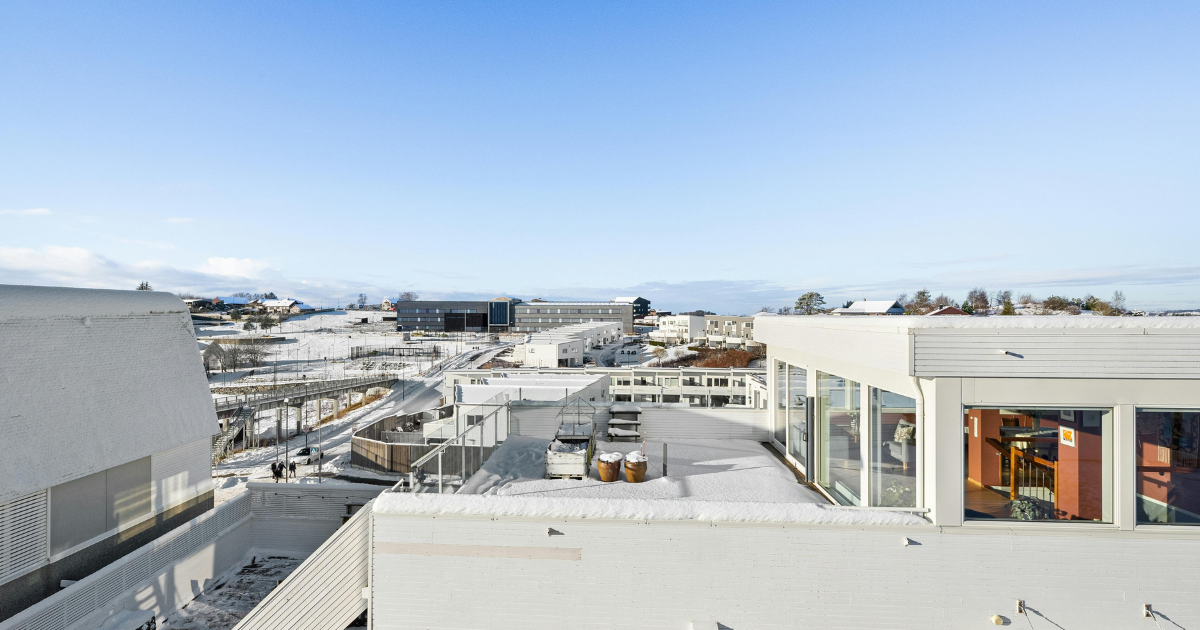
Michigan winters bring more than snow. They often bring stress to your building that can go unnoticed until it’s too late. Every year, countless facility managers brace themselves for water stains, leaks, and unexpected repair bills caused by a silent culprit: freeze-thaw roof damage.
This cycle of melting and refreezing is very destructive, and preventing water damage in commercial roofs starts with understanding it and taking action before the first freeze. It’s actually not a matter of if it will happen, but how much damage it will cause if left unchecked.
If you’ve ever wondered why everything seems fine in the fall but leaks appear by spring, freeze-thaw cycles are likely to blame. And while the risks are real, so are the solutions. At Silicoat Roofing, we specialize in protecting commercial flat roofs from Michigan’s harshest conditions. By the time you finish reading, you’ll know exactly what steps to take to safeguard your property this winter.
Understanding Freeze-Thaw Roof Damage
Michigan flat roof winter problems go far beyond the obvious snow and ice you see on the surface. For commercial building owners and facility managers, the real danger lies in what happens beneath the frost line: water seeps into tiny gaps, freezes overnight, and expands, leading to serious freeze-thaw roof damage.
The Science Behind the Cycle
When water seeps into even the smallest imperfection in your roof’s surface (whether it’s a seam, crack, or blister) it becomes a ticking time bomb. During the day, melting snow produces water that pools or finds its way into those gaps.
This expansion exerts tremendous pressure on roofing materials. Over time, what was once a nearly invisible flaw grows into a flat roof pucture, tear, or leak. Multiply this process by dozens or even hundreds of cycles in a single Michigan winter, and you have a recipe for structural compromise.
Why Flat Roofs Suffer More
Flat commercial roofs in Michigan face unique challenges during the winter that make them far more vulnerable to freeze-thaw damage than pitched systems. Unlike sloped roofs, which allow snow and meltwater to run off naturally, flat roofs hold water for longer periods of time.
Flat roofs also tend to have large surface areas, which means more exposure to harsh winds, UV rays, and thermal stress. During Michigan’s extreme winters, that large surface expands and contracts with each temperature swing, accelerating wear on membranes. Without proper protective coatings or regular inspections, these roofs age much faster than expected.
With the science in mind, let’s look at the specific winter problems Michigan flat roofs face every season.
Michigan Flat Roof Winter Problems You Can’t Ignore
Michigan flat roof winter problems go far beyond the obvious snow and ice you see on the surface. For commercial building owners and facility managers, the real danger lies in what happens beneath the frost line: water seeps into tiny gaps, freezes overnight, and expands, leading to serious freeze thaw roof damage.
Winter problems are unavoidable, but they don’t have to catch you off guard. Knowing these threats ahead of time gives building owners the opportunity to take proactive steps before damage sets in.
Heavy Snow Loads and Ice Dams
Snow is deceptive. A roof may appear to be holding up, but when accumulated, it adds significant weight, increasing the risk of structural strain. The bigger issue, however, comes when melted snow refreezes at the roof’s edge. Ice dams form, preventing drainage and pushing water back under membranes and flashing.
Ponding Water and Drainage Issues
Detroit roofing in cold climates often suffers from ponding water, especially on older commercial roofs. If a roof isn’t perfectly level, or if drains are clogged, meltwater has nowhere to go. Once the temperature drops, these ponds freeze solid, stressing the roof surface and seams.
Energy Loss Through Cracks
When freeze–thaw cycles widen gaps, they don’t just let water in – they let heat out. Escaping heat raises energy bills and forces HVAC systems to work harder. This is one of the many hidden costs of commercial flat roof winter damage that many facility managers overlook until bills spike.
Accelerated Wear on Materials
Modified bitumen, TPO, EPDM, and other common roofing membranes all degrade faster under the constant expansion and contraction caused by freeze-thaw stress. Even premium materials will age prematurely without protective measures.
These problems create real costs not just in repairs, but in energy efficiency, tenant satisfaction, and long-term asset value.
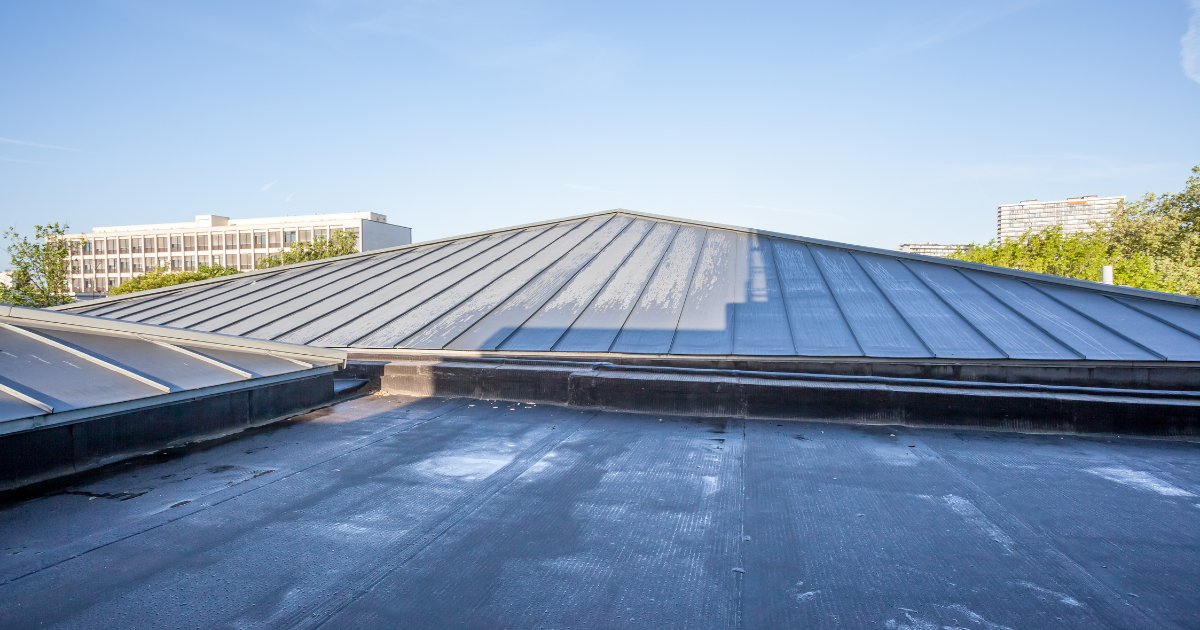
The Hidden Costs of Commercial Flat Roof Winter Damage
While leaks and cracks are the most obvious signs, the real financial burden often comes from hidden costs. For building owners across Michigan, ignoring freeze-thaw roof damage can shorten a roof’s lifespan by years and lead to expenses far greater than the price of preventative care.
Emergency Repairs Are Always More Expensive
When a leak appears mid-winter, the response must be rushed and often involve temporary fixes. Emergency commercial roof repair callouts cost significantly more than preventative maintenance, and they rarely address the root cause.
Interior and Tenant Damage
A leaking roof doesn’t just damage insulation – it disrupts business operations. Water intrusion can ruin ceilings, flooring, and equipment. Tenants may complain, with some even demanding rent concessions or threatening legal action.
Insurance Isn’t Always on Your Side
Insurance policies don’t always cover damages from neglected maintenance. If an adjuster determines that roof leaks stem from preventable issues, the claim could be denied, leaving the building owner responsible for the full cost.
Shortened Roof Lifespan
Most flat roofs are designed to last 20-25 years, but in Michigan, if they are repeatedly exposed to freeze-thaw damage, they may only last 10-12 years before requiring roof replacement. That’s a loss of up to half the expected value of your investment.
The good news is that these costs can be avoided with proactive protection tailored to Michigan’s climate.
Protecting Roofs from Freeze Thaw Damage
Step 1: Schedule a Pre-Winter Inspection
A professional inspection identifies vulnerable areas such as open seams, deteriorated flashing, or clogged drains. Catching these issues in the fall prevents costly mid-winter emergencies.
Step 2: Apply Advanced Roof Coatings
Silicone-based coatings create a seamless, waterproof layer that protects roofs. Unlike other materials, it remains flexible in extreme cold, meaning it won’t crack when temperatures plunge.
Step 3: Improve Drainage Systems
Adding tapered insulation, upgrading scuppers, or installing additional drains reduces ponding. Good drainage is the single most effective way to reduce freeze–thaw pressure points.
Step 4: Work With Experts Who Know Michigan Winters
Local expertise matters when it comes to protecting flat roofs in our area. A contractor who understands the unique challenges we face in cold climates can spot vulnerabilities others might overlook. Partnering with a team experienced in both prevention and long-term solutions ensures that your roof is prepared not just for this winter, but for many seasons ahead.
“Michigan winters are unforgiving. Our approach isn’t about quick fixes, it’s about building roof systems that can survive freeze-thaw cycles for decades. When you invest in a protective coating or roof upgrade with us, you’re buying peace of mind for every winter ahead.” – Rick Dodaj, Founder of Silicoat Roofing.
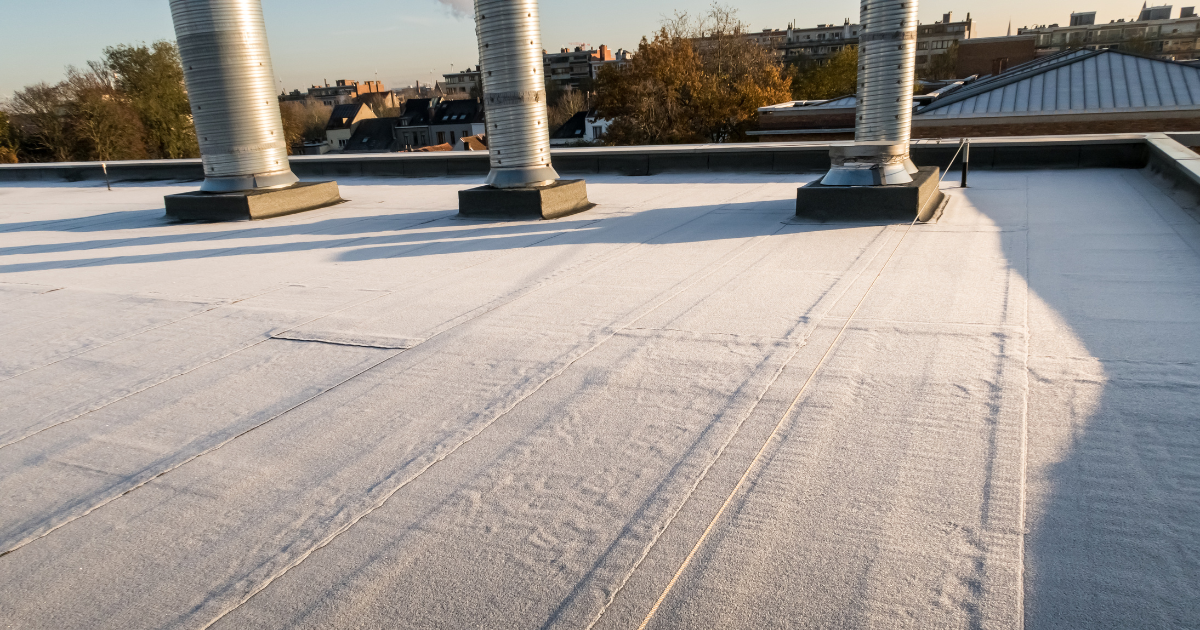
Silicoat Roofing’s Approach to Freeze-Thaw Protection
We know that Michigan’s climate demands more than standard solutions. Our approach to freeze-thaw roof damage is built on three principles: prevention, precision, and long-term performance.
Prevention through Proactive Care
We start with detailed inspections designed to catch small issues early, focusing on managing commercial roof leaks before they escalate into major failures. By identifying vulnerabilities in seams, flashing, and drainage systems ahead of winter, we help building owners avoid disruptive mid-season emergencies.
Long-Term Performance and ROI
Every project is designed with the building’s lifecycle in mind. Instead of short-term patches, our coatings extend the service life of commercial flat roofs by years, helping facility managers make smarter budget decisions in the ongoing roof replacement vs repair conversation.
Customized Solutions for Each Building
No two roofs face the exact same conditions. We tailor our solutions to the unique size, slope, and drainage setup of each property, rather than applying a one-size-fits-all system. This customization ensures that coatings and repairs address the root causes of freeze thaw roof damage.
Year-Round Service Commitment
Michigan winters are harsh, but we don’t disappear when the snow falls. Our crews are available year-round to support facility managers with inspections, emergency assistance, and planned maintenance. That commitment gives building owners peace of mind knowing their roof is protected in every season.
By combining local expertise with high-performance materials, we ensure that commercial properties across Michigan remain watertight, energy efficient, and resilient no matter how harsh the winter becomes.
Common Questions About Freeze Thaw Roof Damage
How often should I inspect my commercial flat roof in winter climates?
At least twice a year: once before the first freeze and once after winter ends.
Do silicone coatings really work in Michigan’s extreme cold?
Yes. Unlike acrylics or asphalt-based coatings, silicone maintains elasticity in sub-zero temperatures, making it the ideal choice for protecting roofs from freeze-thaw cycles.
What’s more cost-effective: repairing damage as it happens or applying a protective coating?
Protective coatings are almost always more cost-effective in the roof replacement vs repair decision many commercial property owners face. Consulting with a professional first ensures you choose the option that protects both your budget and your building.
Can freeze-thaw damage cause structural issues beyond the roof?
Yes. Water intrusion can compromise insulation, electrical systems, and even structural decking if left unchecked.
How quickly can Silicoat Roofing prepare my roof before winter?
Most projects can be scheduled and completed within a few weeks, depending on roof size and weather conditions. The key is to call before winter sets in.
Protecting Your Commercial Roof from Michigan Winters
Michigan’s winters won’t get easier, but your roof can get stronger. Freeze-thaw roof damage is a predictable threat, and ignoring it only increases costs. Silicoat Roofing provides proven solutions with inspections, advanced coatings, and drainage improvements that keep commercial flat roofs watertight, energy-efficient, and reliable year after year.
If you own or manage a commercial building anywhere in Michigan, now is the time to act. Don’t wait for spring leaks to reveal the damage – contact us today to schedule your winter protection consultation.
About the Author
Rick Dodaj is the founder and CEO of Silicoat Roofing, specializing in commercial roofing solutions that protect businesses and their investments. With extensive experience in commercial roofing, Rick leads a team dedicated to providing cost-effective, long-lasting roofing solutions. Connect with him on LinkedIn to learn more about commercial roof maintenance and protection strategies.


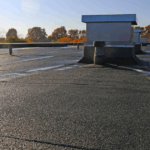 Previous Post
Previous Post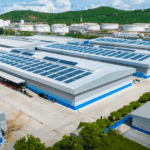 Next Post
Next Post